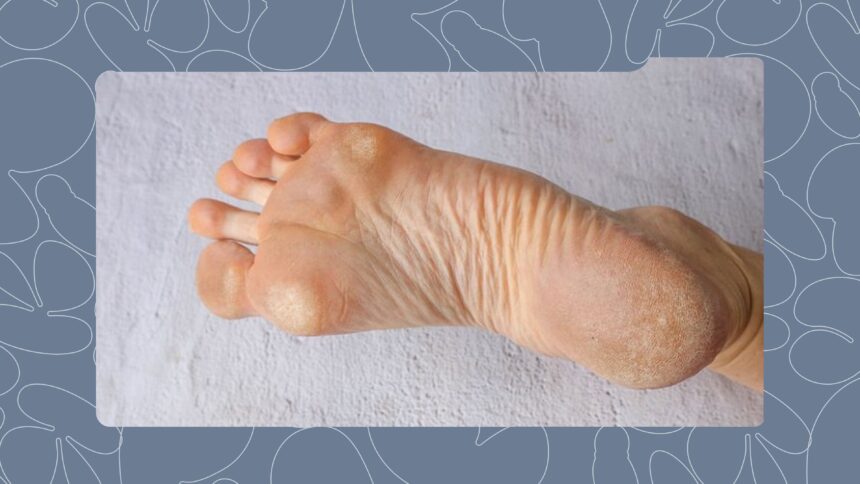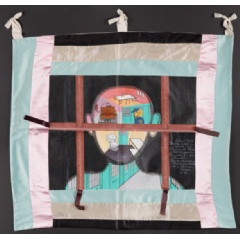Entertainment news Celebrity gossip Movie and TV show updates Latest celebrity news Trending entertainment stories
Discover how to remove callus from your feet safely with at-home methods, natural remedies, and prevention tips for smooth, healthy skin.
Foot calluses are incredibly common. They can appear slowly over time and, while they’re usually harmless, they can cause discomfort, make walking unpleasant, and even crack if left untreated.
If you’ve ever felt a rough patch on your heel that snags your bedsheets or noticed hardened skin building up after a long week in shoes, this piece is for you. Learning how to remove callus from your feet is straightforward, as long as you do it safely and consistently. Like my earlier piece on getting rid of hair lice, this guide will explore what causes calluses, how to get rid of them at home, natural remedies, prevention tips, and when it’s best to see a professional.
Entertainment news Celebrity gossip Movie and TV show updates Latest celebrity news Trending entertainment stories What Is a Callus and Why Does It Form?
A callus is a thickened area of skin that develops as a protective response to repeated friction or pressure. On the feet, calluses often form on the heels, the balls of the feet, and under the toes.
Common causes of callus on feet include:
Wearing shoes that are too tight or too loose
Walking barefoot often
Standing for long hours at work
High-impact activities like running or dancing
Dry skin conditions
While calluses can protect the skin from blisters, leaving them untreated can make them crack, bleed, or become painful. That’s why learning how to get rid of callus naturally and safely is important.
Entertainment news Celebrity gossip Movie and TV show updates Latest celebrity news Trending entertainment stories Callus vs Corn: What’s the Difference?
Many people mix up calluses and corns, but they’re not quite the same.
Callus | Corn |
Larger, broader area of hardened skin | Smaller, circular patch of hard skin |
Often painless | Can be painful when pressed |
Usually on the heel or ball of the foot | Often on toes or in between toes |
Knowing the difference matters because treatment can vary slightly. This article focuses on foot callus removal specifically, but you can apply some of these tips to corns too.
If you’re dealing with dry, rough patches on your feet, you don’t always need expensive treatments. Here’s a safe and simple step-by-step guide you can try at home.
1. Soak Your Feet
Start by softening the hardened skin. Fill a basin with warm water and add either:
Epsom salt – helps relax muscles and soften skin
Apple cider vinegar – mild acid to loosen dead skin
Bragg Organic Apple Cider Vinegar (946 ml) is raw, unfiltered, and contains the natural “Mother” rich in enzymes and probiotics. Its mild acidity helps soften hardened skin, making it useful in foot soaks for callus removal.
)
)
Photo: Bragg Organic Vinegar
Mild soap – for everyday cleansing
Soak your feet for 15–20 minutes. This will make it much easier to remove the callus without damaging healthy skin.
2. Gently Exfoliate
After soaking, use a pumice stone or a foot file to gently rub the callused area in a circular motion. Avoid aggressive scrubbing, too much pressure can lead to soreness or infection.
If your skin feels sore or starts to peel unevenly, stop and soak again before continuing.
The Natural Pumice Stone for Foot Scrub is a genuine, coarse volcanic stone designed to exfoliate thick, hardened skin. Its textured surface gently buffs away calluses, dead skin, and rough patches, leaving feet feeling supremely smooth.
Comfortable to hold with a handy hanging rope, it works perfectly after a warm soak to lift stubborn calluses.
)
)
Photo: The Natural Pumice Stone
READ ALSO: Swap Out These 10 Skincare Mistakes for Our Tips & Watch Your Acne Disappear
3. Apply a Callus Softening Cream
Products with urea, salicylic acid, or lactic acid can help dissolve hardened skin over time. Apply to the affected area and massage gently until absorbed.
The Ordinary Salicylic Acid 2% Solution (30 ml) is a lightweight, water-based serum featuring 2 % salicylic acid, a potent keratolytic that gently dissolves dead skin. While designed for blemish-prone facial skin, its exfoliating action may help soften hardened callus on feet when applied carefully.
Best used sparingly on callused areas after soaking, followed by a moisturiser to avoid dryness and potential irritation.
)
)
Photo: The Ordinary Salicylic Acid 2% Solution
4. Lock in Moisture
Once your feet are clean and dry, apply a thick moisturising cream or natural oil like coconut oil or shea butter. For deeper hydration, wear cotton socks overnight after applying the cream.
Toke Scented Shea Butter (Toke Cosmetics) combines unrefined shea butter with moisturising agents like vegetable glycerine, alongside a delicate fragrance. This rich, emollient body cream deeply hydrates rough, thickened skin, making it particularly suitable for soothing and softening callused areas after exfoliation. Use it post-soak and gentle filing to lock in moisture and help maintain supple, smooth feet.
)
)
Photo: Toke Scented Shea Butter
5. Repeat Consistently
Foot callus removal isn’t a one-time task. Even after the first treatment, some hardened skin will likely remain, especially if the callus has been building up for weeks or months. For noticeable improvement, repeat the soaking, gentle exfoliation, and moisturising routine at least two to three times a week. Consistency allows the layers of dead skin to gradually break down without causing irritation. Over time, you’ll notice the skin becoming softer, smoother, and more comfortable to walk on.
Entertainment news Celebrity gossip Movie and TV show updates Latest celebrity news Trending entertainment stories Natural Remedies to Get Rid of Foot Callus
If you prefer a more natural approach to foot callus removal, try these options:
Lemon juice soak: The citric acid helps break down tough skin.
Baking soda paste: Mix with water to form a gentle exfoliating scrub.
Oatmeal scrub: Soothing and moisturising while removing dead skin.
Coconut oil wrap: Apply generously and cover with socks overnight for softer feet.
Alexsial Extra Virgin Coconut Oil (200 ml, Green Cap) is a cold-pressed, extra-virgin coconut oil celebrated for its gentle, hydrating properties and purity, ideal even for newborn skin. Its rich texture deeply moisturises and softens dry, hardened skin, helping to maintain supple, smooth feet after exfoliation.
)
)
Photo: Alexsial Coconut Oil
Important: Avoid home remedies if you have diabetes, poor circulation, or open wounds on your feet. In those cases, always consult a healthcare professional before starting treatment.
Entertainment news Celebrity gossip Movie and TV show updates Latest celebrity news Trending entertainment stories When to See a Podiatrist
Most calluses can be managed at home, but you should see a foot specialist if:
The callus is painful, bleeding, or infected
You have diabetes or nerve problems in your feet
The callus keeps returning despite treatment
You’re unsure if it’s a callus or another skin condition
A podiatrist can safely remove the hardened skin and suggest custom insoles or other preventive solutions.
Entertainment news Celebrity gossip Movie and TV show updates Latest celebrity news Trending entertainment stories Preventing Callus on Feet
Once you’ve removed a callus, keeping your feet smooth is all about prevention. Here’s how:
Wear well-fitted shoes: Avoid footwear that’s too tight or loose.
Use cushioned insoles: Reduces friction and pressure on feet.
Moisturise daily: Prevents dryness that can lead to thickened skin.
Exfoliate weekly: Light scrubbing keeps dead skin from building up.
Alternate footwear: Rotating shoes can reduce repeated pressure points.
READ ALSO: You’re Probably Doing These 13 Things Wrong With Your Hair
Calluses may be common, but that doesn’t mean you have to live with them. By understanding what causes them, using safe at-home treatments, and making small changes to your footwear and daily care, you can keep your feet smooth and comfortable.
Healthy feet make every step lighter, and with a little consistency, those stubborn patches will be gone before you know it.








